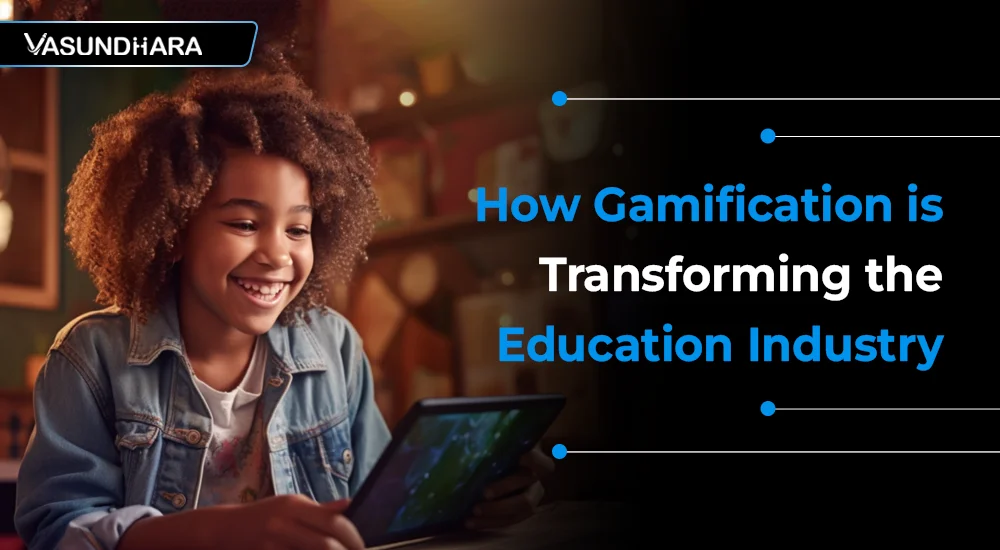Remember when learning meant sitting in a classroom, listening to the teacher, and scribbling notes? Well, the times are changing, and so is how we learn.
In today's digital age, education is undergoing a significant transformation, and gamification is at the forefront.
Imagine a world where learning is as engaging as playing your favorite video game.
Sounds too good to be true? It's not! Welcome to the world of gamified education.
Imagine a classroom where learning feels like an adventure, where acquiring knowledge is as exciting as leveling up in a game.
This is the promise of gamification in education – a revolution that turns the mundane into an extraordinary learning experience.
1. What is Gamification?
Gamification involves applying game-design elements and game principles in non-gaming contexts.
It leverages the natural desires for competition, achievement, and collaboration to enhance user engagement and participation.
In education, gamification involves using game mechanics, such as points, badges, and leaderboards, to make learning more engaging, interactive, and fun.
Just as a captivating video game keeps you glued to the screen, imagine if your classroom lessons could evoke the same excitement. Gamification brings this possibility to life.
2. Why Gamification in Education?
The traditional classroom model, where the teacher is the primary source of knowledge and students passively absorb information, is becoming obsolete.
Research shows that passive learning is less effective compared to active learning, where students actively participate in the learning process.
Gamification in learning is a powerful tool to promote active learning, as it encourages students to take an active role in their learning journey.
3. Implementing Gamification in the Classroom
- Practical Steps for Teachers
Educators can start small, incorporating game elements like quizzes with points or interactive discussions.
Gradually, they can build complex gamified systems that align with the curriculum.
The "Classcraft" platform transforms classrooms into role-playing adventures, while Duolingo uses gamification to make language learning addictive.
From online platforms like Kahoot! For interactive quizzes to Classcraft for classroom management, many tools are available for teachers to embark on their gamification journey.
Teachers, imagine the excitement in your classroom as students embark on a learning journey filled with challenges, rewards, and a dash of healthy competition.
4. Potential Benefits of Gamification in Education
Games are inherently engaging.
By incorporating game elements into the learning process, students are more likely to be engaged and actively participate in their learning.
For example, a study found that gamification increased student engagement by 71%.
Employing gamification in learning helps in better retention of information.
When students are actively engaged, they are more likely to remember and retain the information.
For example, a study found that students who learned through gamified methods had a 9% higher retention rate than traditional methods.
Gamification leverages the natural desires for competition, achievement, and collaboration to increase motivation.
For example, a study found that 80% of the students who participated in gamified learning activities showed increased motivation.
5. Challenges and Considerations
- Balancing Fun and Learning
Striking the right balance between entertainment and educational content is crucial to maintaining the learning objectives.
- Potential for Distraction
While gamification captivates attention, ensuring students remain focused on the core learning goals is essential.
- Designing Appropriate Games
Designing educational games that are engaging and effective in achieving learning outcomes is a significant challenge.
It requires a deep understanding of the subject matter, pedagogical principles, and game design.
A well-designed game may fail to achieve its educational objectives and demotivate students.
- Accessibility and Inclusivity
Ensuring that the gamified content is accessible to all students, regardless of their physical or cognitive abilities, is a significant consideration.
Designing games that cater to the diverse needs of students is challenging but essential to ensure inclusivity.
- Teacher Training and Support
Teachers play a crucial role in successfully implementing gamification.
They must be adequately trained and supported to effectively integrate gamification into their teaching practices.
While gamification is designed to increase student motivation, it may only work for some students.
Some students may need help finding the game engaging or prefer traditional teaching methods.
Understanding the preferences and motivations of different students is crucial for successfully implementing gamification.
6. Real-World Examples of Gamification in Education
Duolingo is a language-learning app that uses gamification to make language learning fun and engaging.
Users earn points, unlock levels, and receive virtual rewards as they progress through the lessons.
Classcraft is an online platform that transforms the classroom into a game.
Students can create avatars, earn points for good behavior and academic achievements, and unlock new powers and rewards.
Khan Academy is an online learning platform that uses gamification in education to encourage students to practice and master skills.
Students earn points, badges and can track their progress on a personalized dashboard.
Future Trends in Gamification and Education
Artificial intelligence and virtual reality are poised to enhance gamification, offering immersive experiences that transport students to new dimensions of learning.
- Personalized Learning Platforms
As technology advances, personalized learning pathways will become more refined, catering to individual student needs.
Virtual Reality (VR) and Augmented Reality (AR) technologies will play a significant role in gamification.
These technologies provide an immersive learning experience by creating a virtual environment for the students to interact with.
This can make learning more engaging and memorable.
AI will play a crucial role in developing gamification in education.
AI algorithms will be used to analyze the data collected from the students' interaction with the games to provide insights into their learning patterns, strengths, and areas for improvement.
This will help in creating more effective and personalized learning experiences.
Gamification will not only be used for academic subjects but also for developing soft skills like leadership, teamwork, problem-solving, and communication.
Games that require students to work in teams, make decisions, and solve problems will be more prevalent.
Are you an educator looking to transform your teaching methods and enhance students' learning experiences?
Gamification in education may be the answer! If you are facing any challenges in implementing gamification in your classroom or have any inquiries about how to get started, don't hesitate to contact us.
We are here to help you make the most out of gamification and unleash your students' full potential.
Conclusion
Gamification is not just a buzzword but a powerful tool that can potentially revolutionize the education sector.
Gamification can enhance student engagement, retention, and motivation by making learning more engaging, interactive, and fun.
However, it is essential to carefully design the gamification elements to cater to the diverse needs and preferences of the students.
So, are you ready to embrace the future of education and transform your teaching methods? The game is on!




